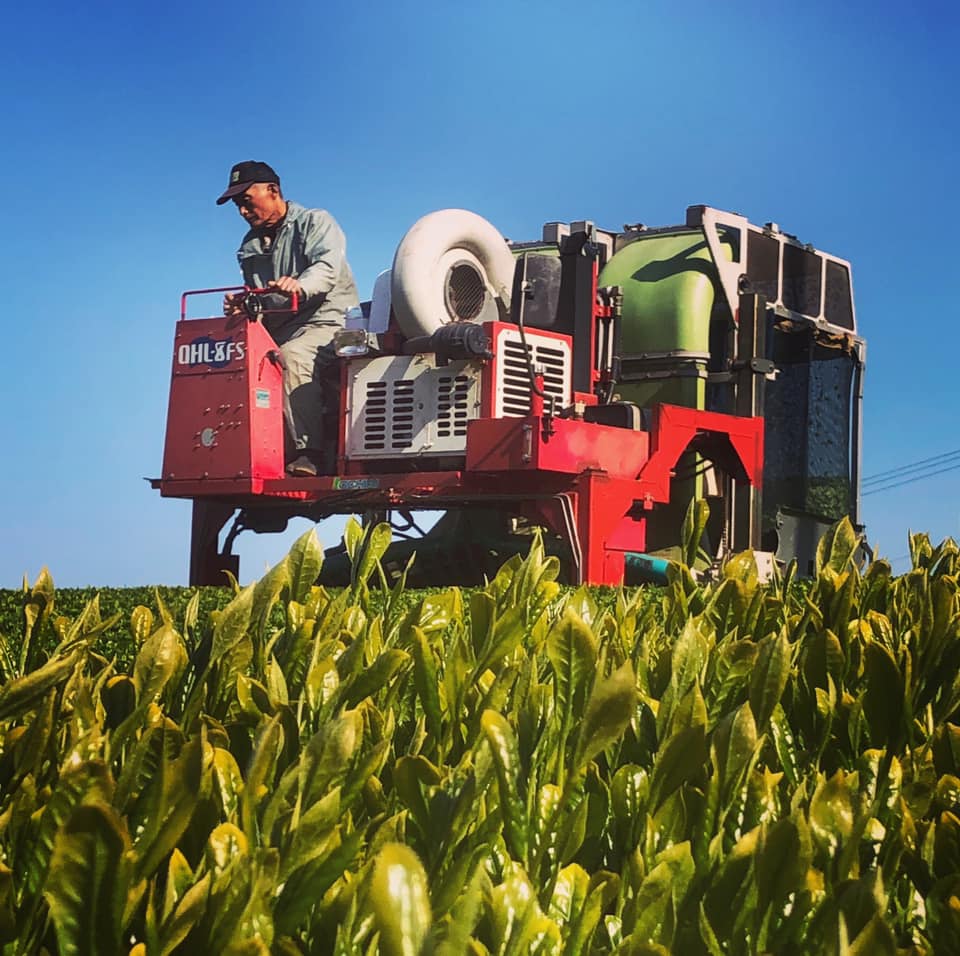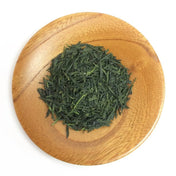With the welcoming of spring, we are hearing more and more exciting news of shincha as tea farmers complete their first spring harvest, it is really a golden time during the golden week in Japan (there are several Japanese holidays durning this time spanning the period from 29th of April to early May). At Yunomi, we are just as excited to be receiving and selling shinchas from this year’s harvest (2021) and the good news is, if you have a specific shincha you are waiting for, there is potential to pre-order, too.
Shincha literally means “new tea” in Japanese (新 "Shin" means new, 茶 "cha" means tea) and comes with several definitions. Broadly speaking, shincha refers to any leaf (from the plant camellia sinensis) in the first two months or so after it is harvested and processed into dried tea leaf. Most commonly, this is the spring harvest between April - May, though in rare cases you may see some selling shincha from the summer or even autumn harvest. This means the same spring tea called shincha in May is no longer called shincha in August because it is no longer considered "new" and at it's freshest.
However, many farmers will harvest extra early for particularly young, tender leaves. These have several names (we include an example of a product from these specific harvests):
- Hashiri shincha: Hashiri means "run"; therefore implying that the farmers have to run out to the tea fields to harvest the leaves at earliest point possible. The character 大 (pronounced "OH") is added to extra early harvests for emphasis: 大走り - "oh-hashiri".
- Hatsutsumi shincha: "First picking" 初摘み or the farmer's very first picking of the spring season.
- Hachijyu hachiya shincha: "88th night" referring to the 88th day of spring in the old lunar calendar, tea picked on this day is said to be the best and brings good fortune for the year (this time comes in early May, this year it was May 1st). Also, it is referred to as the night because in pre-modern times when the lunar calendar was used, the day ended at sunset and night was the beginning of the next day, so "night" was how Japanese counted the days.
 Kajihara Tea Garden, A breathtaking view of their 2021 Shincha harvest, zairai cultivar. Tsuge, Ashikita Village, Kumamoto Prefecture.
Kajihara Tea Garden, A breathtaking view of their 2021 Shincha harvest, zairai cultivar. Tsuge, Ashikita Village, Kumamoto Prefecture.
Japanese tradition has always emphasized that shincha (or more generally the spring harvest) is rich in vitamins and minerals and has superb taste. But why? Tea bushes are an evergreen and don’t lose their leaves in the winter. However, they do become dormant in the winter because they require a certain amount of temperature and sunlight to grow.
But gradually, from the latter half of February to March, the soil temperature increases and the roots of the tea plants begin to awake. After having rested peacefully, the tea bushes begin to absorb water and nutrients through their roots, soaking up the spring sunlight and start growing fresh new tea leaves. These young sprouts and leaves become shincha, which contains the highest amount of nutrients (including amino acids such as theanine) compared to other times of the year.
Depending on the region and local growing conditions Japanese green tea can be harvested between two and five times each year (average is four harvests) between spring and autumn but the spring harvest is typically the highest quality. Shincha tends to have more umami and a once-in-the-year sweetness, with lower levels of astringency, since the soft spring sunshine doesn’t cause as much theanine to convert to catechins, which give the astringency (see our post on climate change and tea chemistry for more details). Shincha is also well known for its incredible lively aroma and grassy notes due to its freshness, as it spends minimal time in cold storage.
Do note that other factors may change the taste of the leaf including the amount of fertilization provided, the amount of shading (increasing umami and decreasing bitterness as theanine is prevented from converting into antioxidants), and how large the leaf is allowed to grow before harvest.
2021 Shincha harvesting scenes:
 Okutomi Tea Garden; April 17th the start of hand-picking shincha under blue skies; Sayama, Saitama prefecture.
Okutomi Tea Garden; April 17th the start of hand-picking shincha under blue skies; Sayama, Saitama prefecture.
 Ashigaracha Labo; 2021 shincha harvesting in action; Odawara, Tokyo Prefecture.
Ashigaracha Labo; 2021 shincha harvesting in action; Odawara, Tokyo Prefecture.
 Kaneroku Matsumoto Tea Garden; shincha harvesting the ooiwase cultivar, April 11th, Shimada, Shizuoka Prefecture.
Kaneroku Matsumoto Tea Garden; shincha harvesting the ooiwase cultivar, April 11th, Shimada, Shizuoka Prefecture.
Now, are you more understanding why shincha is highly appreciated and valued? It’s similar to other seasonal treats, like fresh strawberries at the peak of strawberry season, the first rice (in Japanese: 新米; shinmai), and Beaujolais nouveau wine in France… One can perhaps even feel the rich life energy in the photos on this blogpost coming from some of our tea farmers and their shincha scenes. What is more, one will never become bored as each year the shincha coming from the same tea farmer from the same region are slightly different in taste and aroma. Similar to different vintages of wine, each harvest of shincha has a special nuance to its flavor. So, please don't forget to appreciate the hard work of the tea farmers and to think about where the tea is coming from as you indulge in the 2021 shinchas!
Are there any specific shinchas you are particularly looking forward to this year (or maybe you have already enjoyed them!)? Do you have any additional questions about shincha? Let us know, we would be delighted to hear from you!
Other exciting 2021 shincha news:

Bizenya's Shimizu-san cleaned baskets and rush mats for the coming tea season. He invested in custom-made rush mats from a Tatami mat craftworker, which will play an essential role in withering tea leaves, April 20, Hidaka, Saitama Prefecture.

Ayumi Farms (Cyittorattu):On April 25th, Ayumi-san finished processing their hand-picked sencha. This is their 3rd year hand-picking tea with help from friends and community. 48 people gathered in their mountain tea fields to continue the tradition of hand-picking tea in Fujieda, Shizuoka prefecture. While they may not be as adept as the generations above them, hand picking tea is such a beautiful collaborative activity of recognising each other's presence and completing a harvest that cannot be done by an individual. Thank you, everyone for your hard work (Japanese: お疲れ様です - Otsukaresama-desu)!

Marushige Shimizu Tea Farm: During the golden week period in Yokkaichi City, Mie Prefecture, one may experience hand picking teas and also enjoy eating fresh new tea leaves tempura with the Shimizu family! If you would like to try making shincha tempura at home, here's a recipe!
Feature Image: From Chiyonoen Tea Garden (Yame, Fukuoka Prefecture) before their shincha harvest.


